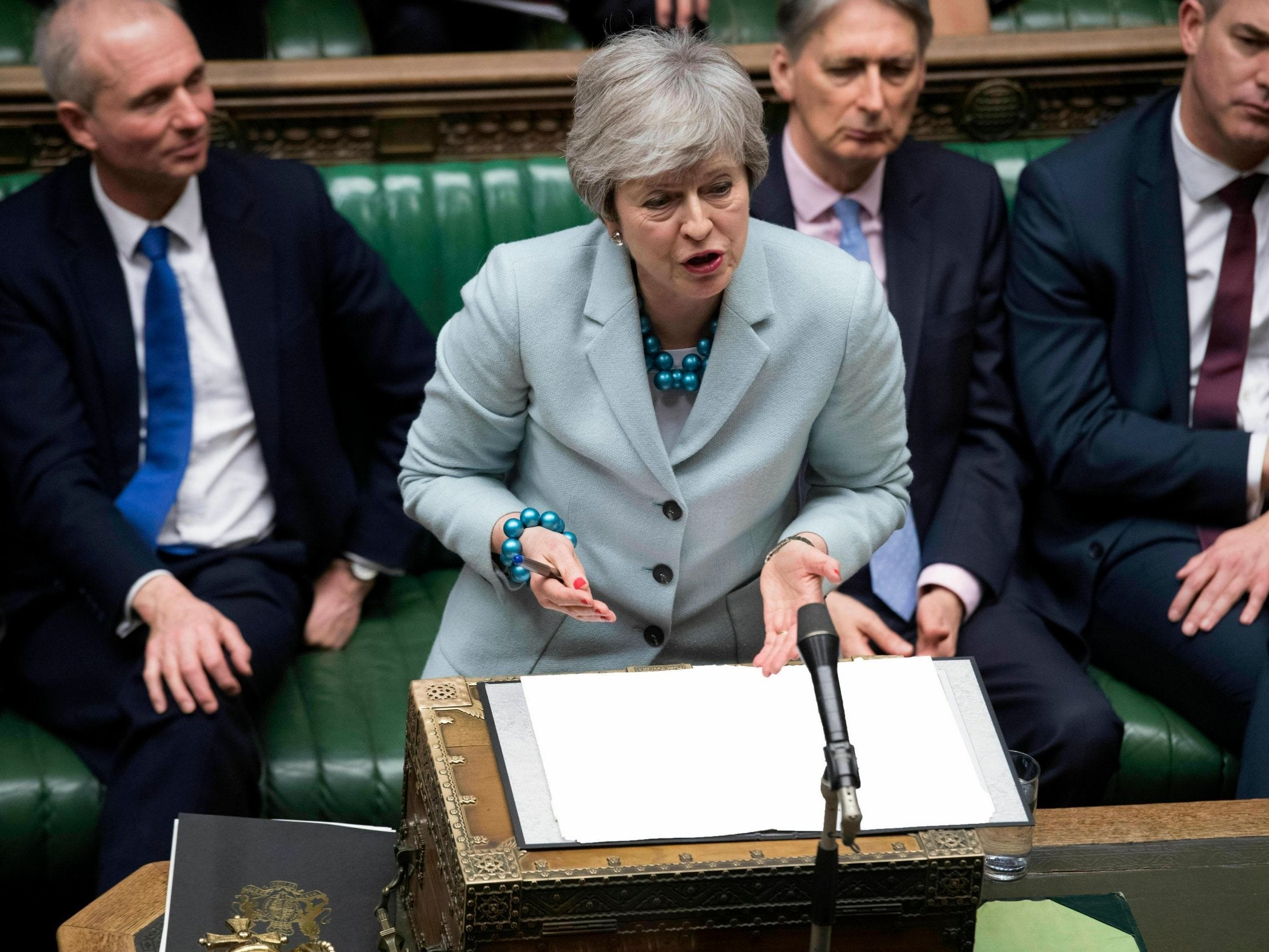Why are MPs debating different trading relationships with the EU when they are not part of Theresa May’s Brexit deal?
Analysis: Indicative votes in the Commons appear to be taking us back to Brexit square one, says Sean O’Grady, but can we really start the whole process again?


It is often said that the Brexit choice is between a deal and no deal.
However, the current situation is that “the deal”, as agreed between the EU and the UK last November, is at best only a half a deal – a legally binding withdrawal agreement, plus only a “political declaration” about the future UK-EU trade and security treaty, that has no great legal force. A couple of other clarificatory documents have been tacked on more recently.
This is the package that the House of Commons has rejected twice, by overwhelming majorities, and which the prime minister will not bring back unless she has more assured support. We have also seen MPs reject a no-deal Brexit – a position now (probably) accepted by the prime minister.
So we know clearly what most MPs don’t want. And now MPs are about to hold “indicative votes”, and an accompanying debate, about what they do want to see.
The options are as varied as the imaginations of MPs will allow, but they are being encouraged, among themselves, to be realistic.
In principle, then, MPs are in fact choosing a whole new approach to Brexit. They are talking about all manner of options, including: hard Brexit (no deal and trading on World Trade Organisation terms); staying in the customs union and the single market; staying in the customs union only; staying in the single market only; staying in parts of one or the other or both; having only a free trade agreement; and more besides. Possible models to work from include those between the EU and Norway, Canada, Switzerland, Turkey and Ukraine.
Any or all of these could be proposed with a provision for a second referendum.
If one of these models gathered substantial and reliable support, the Commons could in effect tell the government to pursue it with the EU – asking for more time to renegotiate the negotiation. Again.
The EU would be confident that the UK knows what it wants, and ministers could be secure in their negotiating brief.
However, such talks would have to extend some way beyond the current withdrawal agreement and be much firmer and more detailed than the current political declaration on future trade.
Be in no doubt: we are starting Brexit all over again. Indicative votes in other words, are in effect pressing Ctrl+Alt+Del on the current Brexit deal
This would be an advantage in that the UK and the EU would be in a position to see and judge a full “deal” for the future; but it would require considerable time to prepare.
The other problem is that the vote in the Commons is also only indicative in the sense that it is an expression of preference on one side: but it takes two to sign a treaty.
If we decided to stay in the European Economic Area (a much closer relationship than under Ms May’s deal), for instance, we might have to send more money to Brussels; or accept the European Court of Justice’s rulings; or free movement of workers. The cabinet might or might not go along with that; but there would surely also be a moral argument to put that new idea to the people.
Be in no doubt: we are starting Brexit all over again. Indicative votes, in other words, are in effect pressing Ctrl+Alt+Del on the current Brexit deal – and indeed looking beyond its surprisingly narrow parameters.
And while starting again from a more logical base of parliamentary backing and a much fuller idea of the future relationship may be a fine idea, it will take time to work through.
Got an unanswered question about Brexit? Send it to editor@independent.co.uk and we’ll do our best to supply an answer in our Brexit Explained series
Join our commenting forum
Join thought-provoking conversations, follow other Independent readers and see their replies
Comments